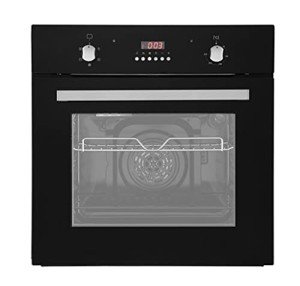integrated electric ovens of Built-In Ovens: A Seamless Approach to Modern Cooking
In contemporary kitchen areas, where design aesthetic appeals mix effortlessly with functionality, one home appliance stands out as a real video game changer: the built-in oven. As house owners and chefs alike continue to seek ingenious options that improve their cooking experience, built-in ovens have become progressively popular. This short article explores the benefits, factors to consider, and trends surrounding built-in ovens, highlighting why they are a vital function in contemporary cooking areas.
What is a Built-In Oven?
A built-in oven is a kitchen area appliance designed to be integrated into the cabinetry of a kitchen area rather than standing alone. Unlike conventional freestanding ovens, which can be moved and positioned anywhere, built-in ovens been available in numerous styles and sizes to fit particularly within designated spaces. Offered in single or double configurations, these ovens provide a streamlined look that complements modern kitchen styles.

Benefits of Built-In Ovens
1. Space-Saving Design
One of the most enticing benefits of built-in ovens is their space-saving design. By integrating the oven into kitchen cabinetry, you can free up important counter and floor area. This is particularly helpful in smaller sized kitchens, where taking full advantage of space is essential. Built-in ovens can be installed at eye level, making them more accessible and minimizing the need to flex down.
2. Visual Appeal
Built-in ovens add to a streamlined and cohesive kitchen design. Readily available in numerous surfaces-- such as stainless-steel, black, white, and custom-made kitchen cabinetry-- they can blend effortlessly into the general design. This aesthetic appeal boosts the kitchen's visual harmony and elevates the space, producing a contemporary and advanced atmosphere.
3. Improved Functionality
Numerous built-in ovens come equipped with innovative cooking innovations, such as convection cooking, steam ovens, and clever functions. These enhancements enable versatile cooking alternatives, making it much easier to accomplish professional-level outcomes in the house. Smart built-in ovens can even link to Wi-Fi, enabling users to control the oven remotely, receive notifications, and access a range of cooking programs and dishes.
4. Improved Ventilation
Due to the fact that built-in ovens can be integrated with cooking area hoods and ventilation systems, they can help keep better air quality and minimize cooking odors. This is especially considerable for those who like to prepare with aromatic spices and components, as an efficient ventilation system can keep the kitchen comfy and welcoming.
5. Modification Options
Built-in ovens use a large range of personalization choices to fit individual cooking styles and needs. From professional-grade home appliances with several cooking modes to compact designs for smaller sized cooking areas, homeowners can pick the oven that fits their particular requirements. Numerous producers also offer customizable front panels, permitting you to match the oven's appearance to your cabinetry for a genuinely merged look.
Factors to consider When Choosing a Built-In Oven
While built-in ovens have many benefits, there are necessary factors to consider to remember before making a purchase:
1. Rate
Built-in ovens generally feature a higher price than their freestanding counterparts due to their style and installation requirements. It's important to element in both the expense of the oven and any additional expenditures associated with cabinetry modifications or setup.
2. Installation Requirements
Installing a built-in oven frequently needs professional assistance, specifically if you need to customize existing kitchen cabinetry. Guarantee that you consider any costs related to setup, including labor and prospective cabinets modifications.
3. Size and Dimensions
Before purchasing a built-in oven, measure the designated space accurately to make sure a proper fit. Built-in ovens can be found in different sizes and setups, so picking one that aligns with your needs and kitchen area design is essential.
4. Lifestyle and Usage
Consider your cooking habits and needs when picking a built-in oven. If you frequently host big events, a double oven may be more beneficial. On the other hand, if you have a compact cooking area, a single-wall oven may be enough.
Trends in Built-In Ovens
The cooking area device market is continuously developing, and built-in ovens are not exempt from emerging trends. Some existing patterns consist of:
Smart Technology Integration: With the increase of smart home innovation, built-in ovens now often include connection choices. This permits users to keep track of cooking development and change settings via mobile apps.
Energy Efficiency: As sustainability ends up being a concern, lots of producers are investing in energy-efficient built-in ovens that lower energy consumption while keeping performance.
Multi-functional Designs: Built-in ovens now offer functions such as air frying, sluggish cooking, and steaming, supplying flexibility that fulfills a wide variety of cooking approaches.
Conclusion
Built-in ovens undoubtedly represent an ideal mix of design, function, and convenience in today's kitchen areas. As more property owners choose for this modern solution, the focus moves to creating a cooking area that is as visually pleasing as it is useful. Whether you are developing a new home or renovating your kitchen, thinking about a built-in oven might raise your culinary experience and transform your kitchen into a trendy and functional haven. With a selection of choices offered and ongoing developments in technology, built-in ovens remain a standout option for both amateur cooks and cooking lovers alike.
